Gossen Metrawatt SECUTEST 21F Handleiding
Gossen Metrawatt
Meetapparatuur
SECUTEST 21F
Bekijk gratis de handleiding van Gossen Metrawatt SECUTEST 21F (16 pagina’s), behorend tot de categorie Meetapparatuur. Deze gids werd als nuttig beoordeeld door 81 mensen en kreeg gemiddeld 4.8 sterren uit 41 reviews. Heb je een vraag over Gossen Metrawatt SECUTEST 21F of wil je andere gebruikers van dit product iets vragen? Stel een vraag
Pagina 1/16

Operating Instructions
SECUTEST 21F
Workshop Test Panel for Testing in Accordance with DIN VDE 0701-0702 3-349-069-03
9/9.20

2Gossen Metrawatt GmbH
(1) Connector socket/terminal for DUT phase conductor
(parallel to test sockets)
(2) Connector socket/terminal for DUT protective conductor
(parallel to test sockets)
(3) Connector socket/terminal for conductive parts of the DUT
for testing for absence of voltage in accordance with
DIN VDE 0701-0702
(4) Measuring range selector switch
(5) Contact surface for finger contact
(6) Probe cable with clip
(7) Type T3.15/250G or T3.15L250 fuse
(8) Mains switch
(9) Residual current circuit breaker (RCCB)
(10) “L1–L2–L3” signal lamps
(11) Ammeter changeover switch
(12) Phase selector switch
(13) VDE / NETZ switch
(14) Voltmeter changeover switch
(15) Circuit breakers
(16) Test jacks L1–L2–L3–N–PE (parallel to the test socket)
(17) 32 A, 5-pole CEE outlet
(18) 16 A, 5-pole CEE outlet
(19) 16 A, 3-pole CEE outlet
(20) Perilex outlet
(21) Earthing contact outlet, 16 A / 230 V
(22) Emergency stop switch
(23) Mains outlet, 16 A / 230 V
(24) Connector jacks and signal lamp for continuity test
(25) Connector jacks for safety extra-low voltage, 0 to 50 V
(26) Overcurrent trip
(27) Voltage selector switch, 0 to 50 V
(28) Reversing switch
(29) Line voltage indicator
(30) Low-voltage indicators
(31) Current indicator
Meaning of Symbols on the Instrument
Continuous, doubled or reinforced insulation
Warning concerning a source of danger
(attention: observe documentation!)
CE marking
This device may not be disposed of with the trash.
Further information regarding the WEEE mark can be
accessed on the Internet at
www.gossenmetrawatt.com by entering the search
term “WEEE”.
(1) (4)(2) (3) (5) (6) (6) (9)(8)(7)
(10)
(11)
(12)
(13)
(14)
(15)
(16)
(17)
(18)(19)(20)(21)(22)(23)
(24)
(25)
(26)
(27)
(28)
(30)
(31)
(29)
!

Gossen Metrawatt GmbH 3
Table of Contents
Page
1 Application ........................................................................3
2 Safety Precautions ...........................................................3
3 Installation ........................................................................4
4 Initial Start-Up ..................................................................4
4.1 Testing Protective Conductor Potential ............................................4
4.2 Measuring Line Voltage .................................................................4
5 Connecting the DUT to the Test Panel ..............................5
5.1 Protection Class I Devices ..............................................................5
5.2 Protection Class II and III Devices ................................................... 7
5.3 Devices with Single or Multi-Phase Connection Without Plug ........... 8
5.4 Setting the Switches at the Test Panel ............................................8
5.5 Setting the Switches at the Device Under Test ................................ 8
6 Testing Devices in Accordance with DIN VDE 0701-0702 9
6.1 Measuring Protective Conductor Resistance .................................... 9
6.2 Insulation Resistance Measurement ............................................... 9
6.3 Measuring Protective Conductor Resistance .................................. 10
6.3.1 Equivalent Leakage Current ......................................................... 10
6.3.2 Differential Current Measurement for Protective Class I Devices .....10
6.4 Measuring Contact Current .......................................................... 10
6.4.1 Contact Current Measurement – Differential Current ..................... 10
6.4.2 Testing in Accordance with the Direct Method ...............................10
7 Measuring Load Current and Voltage at the
Consumer .......................................................................11
7.1 Consumer Current via Outlets (17 through 21) .............................. 11
7.2 Load Current via the Mains Outlet (23) ......................................... 11
7.3 Voltage at the Consumer ............................................................. 11
8 Measuring and Testing with Safety Extra-Low Voltage ..11
9 Display and Indicators at the
METRATESTER 5-F-E Test Instruments ..........................11
9.1 Indication of Errors and Limit Values ............................................. 11
10 Characteristic Values ......................................................12
10.1 Test Panel ..................................................................................12
10.2 METRATESTER 5-F-E ..................................................................12
11 Maintenance ...................................................................14
11.1 Periodic Self-Test of the Test Panel Connection for
Protective Conductor Continuity ....................................................14
11.2 Testing the Integrated RCD .......................................................... 14
11.3 Fuse Replacement ...................................................................... 14
11.4 Housing Maintenance ..................................................................14
11.5 Recalibration ............................................................................... 14
12 Repair and Replacement Parts Service
Calibration Center and Rental Instrument Service .........15
13 Product Support .............................................................15
1 Application
The permanently mounted SECUTEST 21F test panel is intended
for use by electricians as workshop equipment. It’s used to mea-
sure and test electrical devices after repair or modification, as well
as for periodic testing in accordance with DIN VDE 0701-0702.
According to these regulations, protective conductor resistance,
insulation resistance and equivalent leakage current must be
measured, and testing must be conducted for the absence of
voltage at user accessible conductive parts at data processing
equipment and office machines.
The measurement of operating voltage and current consumption
at devices under test, as well as testing for conductor continuity,
represent further applications for the substantiation of correct
functioning of electrical equipment. Beyond this, the protective
conductor at the mains connection can be tested for the absence
of voltage and line voltage can be measured.
2 Safety Precautions
The test panel is equipped with a test
instrument, and has been manufactured and tested in
accordance with the following regulations:
IEC/EN 61010-1/
VDE 0411-1 Safety requirements for electrical
equipment for measurement, control and
laboratory use; general requirements
DIN VDE 0404 Testing and measuring equipment for
testing the electrical safety of electrical
devices, part 1; General requirements, and
part 2: Devices for periodic testing
When used for its intended purpose, the safety of the user, the
test instrument and the device under test (electrical equipment) is
assured.
Read the operating instructions carefully and completely before placing
your test instrument into service. Follow all instructions contained
therein. Make sure that the operating instructions are available to all
users of the instrument.
Tests may only be performed under the supervision of a qualified
electrician. The user must be instructed by a qualified electrician
concerning performance and evaluation of the test.
Observe the following safety precautions:
– The test panel may only be connected to a 220/380 V or
230/400 V mains system with 50 Hz and three 32 A fuses.
– Measurements within electrical systems are prohibited.
– The outlet at the bottom left-hand corner of the test panel with
the designation “Netzsteckdose 16 A/230 V” (mains outlet)
(23) is always live with line voltage, regardless of any selected
switch positions, as soon as the test panel is connected to the
mains.
The “Netzsteckdose” corresponds to the “Functional mains
outlet” at the METRATESTER.
All other outlets on the test panel (17 through 21) are live with
line voltage when the VDE / NETZ switch (13) is in the “NETZ”
position. These outlets (17 through 21) correspond to the test
socket at the METRATESTER.
– Be prepared for the occurrence of unexpected voltages at
devices under test. For example, capacitors may be
dangerously charged.
– Before connecting the device under test to the test panel,
subject it to a thorough visual inspection first. Devices under
test with visibly damaged insulation must be repaired before
metrological testing is performed.
– If the test panel demonstrates visible damage, no longer
functions, has been stored for a lengthy period of time under
unfavorable conditions or has been subject to excessive
stress during transport, it must be assumed that hazard-free
operation is no longer possible. If this is the case, remove the
test panel from service and secure it against inadvertent use.
Product specificaties
| Merk: | Gossen Metrawatt |
| Categorie: | Meetapparatuur |
| Model: | SECUTEST 21F |
Heb je hulp nodig?
Als je hulp nodig hebt met Gossen Metrawatt SECUTEST 21F stel dan hieronder een vraag en andere gebruikers zullen je antwoorden
Handleiding Meetapparatuur Gossen Metrawatt

25 Maart 2025
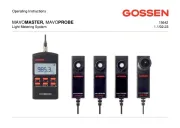
25 Maart 2025

25 Maart 2025
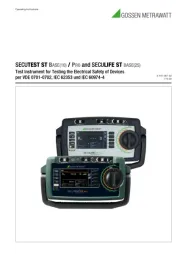
9 Maart 2025
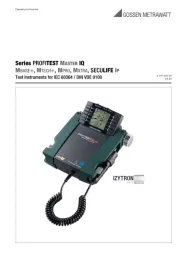
14 Februari 2025
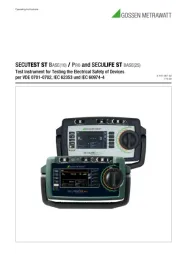
14 Februari 2025
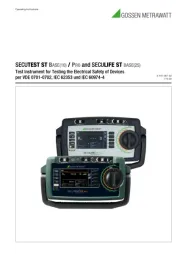
14 Februari 2025

4 Februari 2025

9 Januari 2025

29 Augustus 2024
Handleiding Meetapparatuur
- Beurer
- Albrecht
- Sauter
- Omnitronic
- Maximum
- Laserliner
- Cocraft
- Microlife
- Oscium
- Kopp
- BJZ
- Phoenix Contact
- Tempest
- Goclever
- GW Instek
Nieuwste handleidingen voor Meetapparatuur
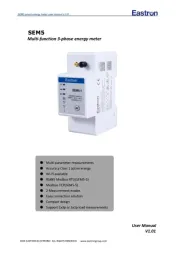
29 Juli 2025
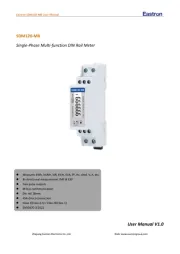
29 Juli 2025
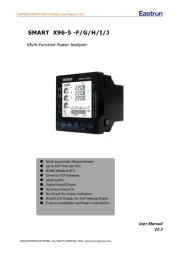
29 Juli 2025

29 Juli 2025
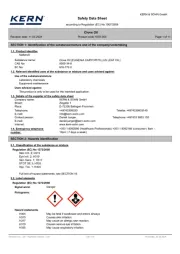
29 Juli 2025
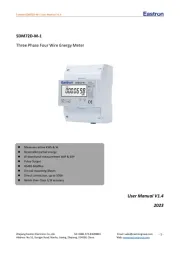
29 Juli 2025
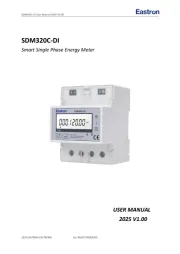
28 Juli 2025
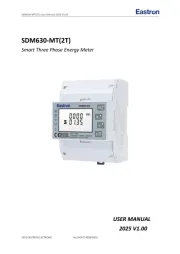
28 Juli 2025
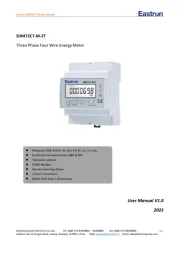
28 Juli 2025
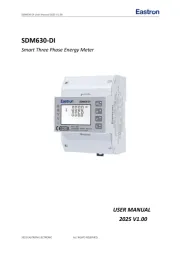
28 Juli 2025